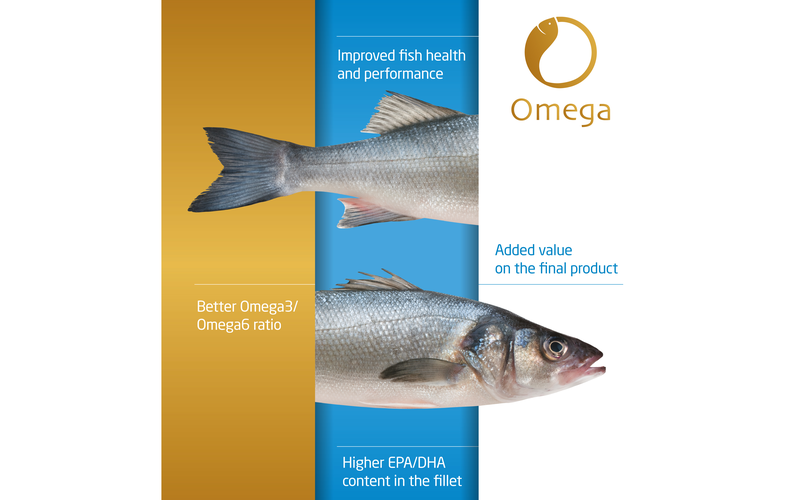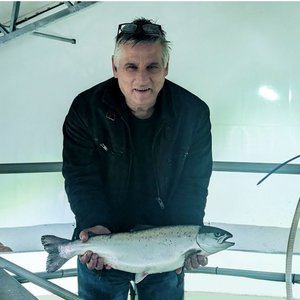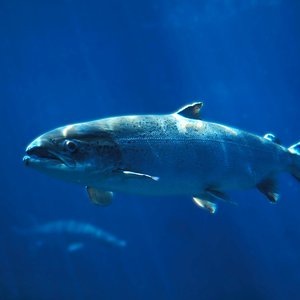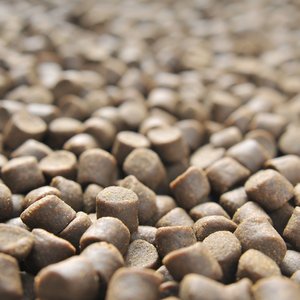Aquasoja recently presented at Aquaculture Europe the results of a commercial scale trial assessing the best feeding strategy in gilthead seabream and European seabass to modulate n3/n6 fatty acids ratio in fillets.
The trial
A trial was performed on a commercial fish farm in southern Spain. Seabream and seabass from three different generations were fed either a fish oil/rapeseed oil (60/40)-based diet or a 100% fish oil diet for one year. Composite samples of each group, i.e. skinned fillets from five fish, were analyzed for the fat content and fatty acids profile, in all three sampling moments.
Results suggest that different feeding strategies can be used for seabream and seabass if the goal is to improve the n-3/n-6 ratio. Since seabream tends to lose (or to maintain) its body weight during winter, reducing fillet fat content and impacting on fatty acids profile, six months feeding a 100% fish oil-based diet pos-winter (from April to September) was enough to turn fillets from portion-size fish with am n-3/n-6 ratio of 0.9 into fillets with 1.4.
Differently, seabass showed a clear response of the fillet lipid profile to the diet throughout the cycle, meaning that the strategy to modulate seabass fillet fatty acids profile appears to be season independent. In seabass, the results obtained hint at the need for continuous feeding on 100% fish oil diets to get fillets with an n-3/n-6 ratio above 1.0-1.2, as the blend of fish oil and rapeseed oil did not allow fillets to go beyond 0.9.
Regarding EPA and DHA, all fish, independent of the species, body size or feed type, showed content in the flesh per 100g above the daily intake recommended by the EFSA to avoid the risk of cardiovascular disease (250-500 mg/day).
“There are no European guidelines or recommendations of n-3/n-6 ratio for seafood materials. Nonetheless, we consider this to be a pathway to be done toward higher added-value and top-quality aquaculture fish,” said Sara Magalhães, Aquasoja technical manager.
“It is important to point out, however, that under Aquasoja’s experience, it is easy to find good quality farmed fish fillets containing already good amounts of EPA and DHA – even above those found in wild fish. Nonetheless, n-3/n-6 fatty acid ratio can vary considerably between markets or according to feeding strategies. In this sense, aiming at delivering more interesting and healthier fillets for the consumers, Aquasoja considers it important to modulate fillets' fatty acids profile, and not only the content in EPA and DHA but also the ratio n-3/n-6,” Magalhães said.
Applying the strategy in commercial feeds
In 2021, Aquasoja launched a line of products called OMEGA that is composed of 100% selected fish oil as the only lipid-added source, and which goal is to increase the n-3 fatty acids retention in the fillet while avoiding the n-6 fatty acids intake and consequent deposition. OMEGA feeds are focused on those customers willing to add value to the final product, by attaining a better n-3/n-6 ratio and higher EPA and DHA content.
The use of this kind of aquafeeds is not new on the market. In fact, the use of 100% fish oil-based diets for a certain period before harvesting is a solution known (though not so often practiced) to adjust the fatty acid profile of fillets towards increased content of EPA and DHA. However, there is a struggle to wash out linoleic acid from the fillet and the administration of these 100% fish oil-based diets is usually performed in the same way.
“The goal with the industrial trial that Aquasoja recently performed was to go a little bit further on this and understand if species-specific feeding strategies could be designed to improve fillets' nutritional quality more efficiently and economically, while wisely using marine resources at the same time. According to what we found in the one-year experiment, it appears to be possible to address different strategies for seabream and seabass. In the end, this is knowledge gained, allowing Aquasoja to go for more precise recommendations near the customers who become interested in this adding-value strategy,” Magalhães explained.
Fish-based ingredients, still essential
The reduction of fishmeal and oil in aquafeeds is one of the major trends in the past few years but many say they can’t be completely replaced.
“We are all aware that marine resources are limited and that they shall be wisely used in aquafeed formulations. For that reason, and while getting advantage of the synergies and circular economy model of Soja de Portugal Group, Aquasoja relies in its recipes on fishmeal from trimmings from co-products of tuna, sardine and/or mackerel, caught for the local canning industry. While greatly reducing its carbon footprint in the sourcing of fishmeal, Aquasoja has better control over the traceability and freshness of this raw material as well as over formulas’ stability in terms of quality and price,” Magalhães stated.
Aquasoja has easy access to selected fish oil (>28% EPA+DHA) produced from co-products of Atlantic species rich in n-3 highly unsaturated fatty acids. Plant-based n-3 from algae will also become part of Aquasoja formulations soon.
“Microalgae were not seen by us as an affordable n-3 rich option, the actual economical context is approaching microalgae oil to fish oil regarding the cost per fatty acid and this ends up turning this ingredient more appealing to our reality. Meanwhile, there are some sustainability questions around these materials, as they are produced far away from Europe and from edible grains. More data on the subject must be gathered to maintain a low environmental footprint in our feeds,” Magalhães said.
Yeast extracts and microbial protein are other novel ingredients already being used to support fish health and contribute to delivering good nutritional and sustainable protein to the recipes with an eye on insects.











